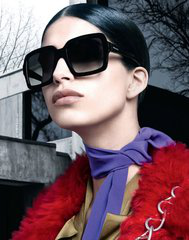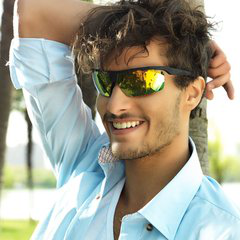As a general rule, you should have a comprehensive eye exam every one or two years, but that may depend on your age, risk factors, and if you are already wearing corrective lenses. An eye exam can help diagnose and treat medical conditions in their early stages. There are also certain eye disorders that are frequently associated with age or health conditions. To ensure that you are taking the best care of your eyes, check out these recommendations for when to schedule your exams.

As a general rule, you should have a comprehensive eye exam every one or two years, but that may depend on your age, risk factors, and if you are already wearing corrective lenses. An eye exam can help diagnose and treat medical conditions in their early stages. There are also certain eye disorders that are frequently associated with age or health conditions. To ensure that you are taking the best care of your eyes, check out these recommendations for when to schedule your exams.
Children (6 months-18 years)
The very first eye exam should be at 6 months of age. This is usually done by the pediatrician and checks that the eyes are focusing properly and are straight, and there is no evidence of an internal eye disorder. Older children should have their eyes examined before they start school. If there are no risk factors of the use of corrective glasses, children should then be examined every two years until they are 18.
Adults (18-60 years) 

Adults should have a comprehensive eye exam every two years unless they have certain risk factors. If any of these conditions are present, it’s best to seek the advice of an eyecare professional or a medical doctor to determine the frequency of exams. People with a family history of eye diseases like glaucoma or macular degeneration need an exam at least once a year. In both of these disorders, early detection plays a key role in minimizing loss of vision.
Other medical conditions that may require more frequent eye exams are diabetes and high blood pressure, both of which can seriously damage the blood vessels in the eyes. Careful monitoring is necessary to spot any abnormalities. If you are taking prescription drugs, be sure to note that at your next eyecare exam; certain drugs may have a negative effect on vision.
Any eye injury should warrant an exam as soon as possible. Injuries can include having a foreign object scratch the cornea or exposure to a chemical or acid that leaves the eyes burning. It’s always better to have your eyes examined as soon after an injury as possible to prevent infection or vision damage.
Adults (61 years and older)

After the age of 61, eye exams should be every year. As the body ages, there are conditions that affect the eyes as well. Early detection of glaucoma, cataracts, and macular degeneration can save a person’s vision with a proper treatment plan.
Senior patients who drive need to be aware of age-related vision changes and diseases which can affect the ability to see well in certain conditions, like in low light or in bright light (sunlight or glare from other cars’ headlights). Color and depth perception may also be affected. Peripheral vision will also be checked. Sometimes a person may not even be aware that their vision has been compromised by a disorder until their eyes are properly examined.
Eye exams are important at any age. Each stage of life has factors that need to be checked and addressed, and early detection is vital. Damage to the eyes need not happen with many correctable conditions; a comprehensive exam and a plan of treatment can help a person enjoy a lifetime of good vision.
评论
发表评论